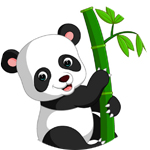家畜一般是指由人类饲养驯化,且可以人为控制其繁殖的动物,如猪、牛、羊、马、猫、狗、骆驼、家兔等,一般用于食用、劳役、毛皮、宠物、实验等功能。
Domestic animals generally refer to animals that are raised and domesticated by humans and can be artificially controlled for reproduction, such as pigs, cattle, sheep, horses, cats, dogs, camels, rabbits, etc., generally used for food, labor, fur, pets, experiments, etc. Features.
livestock , 家畜 , jiā chù 。
pig , 猪 , zhū 。
cattle , 牛 , niú 。
sheep , 羊 , yáng 。
horse , 马 , mǎ 。
donkey , 驴 , lǘ 。
rabbit , 兔 , tù 。
另一种较狭义的家畜,是指相对于鸟类动物的家禽而言的哺乳动物,亦即将鸡、鸭等等被排除在外。
除此此外,哺乳类和鸟类之外的鱼类、昆虫等也通常不被视为家畜。
一般较常见家畜饲养方式为舍饲,圈饲、系养、放牧等。
人类最早饲养家畜最早起源于一万多年前,代表了人类走向文明的重要发展之一,家畜尤其对于提供了较稳定的食物来源作出重大贡献。
中国人古代所称的“六畜”是指马、牛、羊、鸡、狗、猪,亦即中国古代最常见的六种家畜。
一般是指由人类饲养使之繁殖而利用,有利于农业生产的畜类。广义上说,也包含观赏动物。唯实验用动物和观赏用的小鸟类,一般则不称为家畜。主要家畜都认为是由有史以前的野生动物驯养而来,但其起源和经过有许多是不清楚的。到了青铜时代似乎马也成了家畜。而史后野生动物的家畜化则有火鸡等例。家畜与其祖先原种(original breed)的关系,一般是根据骨(特别头骨)等的形态学特征、染色体的数目和形状以及血清反应等进行研究的。有关许多家畜的起源究竟是一元还是多元的问题,以前在以家畜的多数品种间存在着的显著的分化差异(diversity)来进行说明时,而多元说是必要的,但研究表明,在野生动物的种类中也显有相当的变异性,所以坚持多元说已无必要。不过实际上,家畜的多元性似乎还是存在的。近于家畜祖先的动物如:黄牛(Bos taurus)、是B.primigenius、B.primigenius var.Hahni、B.europaeus、B.namadicus;马(Equus caballus)是E.gmelini、E.ferus、E.germanicus;绵羊(Ovis aries)是O.musimon、O.orientalis、O.vignei、O.ammon;山羊(Capre hircus)是C.aegagrus、C.prisca、C.falconer;猪(Sus sussrofa var.domesticus)是S.scrofaferus、S.vittatus、S.mediterraneus;家兔(Oryctolagus cuniculus var.domesticus)是Lepus cuniculus。
也有不少动物,只是局部或一半左右的种群常被人类驯化,当作家畜饲养:
亚洲象(泰国人和印度人的宠物和家畜)
猎豹(部分非洲人和西亚地区国家公民驯养用来狩猎的)
羊驼(被部分南美洲国家人民驯来作家畜)
Another type of livestock in a narrower sense refers to mammals as opposed to birds and poultry, that is, chickens, ducks, etc. are excluded.
In addition, fish, insects, etc. other than mammals and birds are generally not regarded as domestic animals.
Generally, the more common ways of raising livestock are house feeding, pen feeding, tethering, grazing, etc.
The earliest human raising of livestock originated more than 10,000 years ago, which represents one of the important developments of human civilization. In particular, livestock has made a significant contribution to providing a relatively stable source of food.
The “six animals” referred to in ancient times by the Chinese refer to horses, cattle, sheep, chickens, dogs, and pigs, which are the six most common domestic animals in ancient China.
Generally refers to animals that are raised by humans for reproduction and use, which is beneficial to agricultural production. Broadly speaking, it also includes ornamental animals. Only experimental animals and small birds for viewing are generally not called domestic animals. The main domestic animals are believed to have been domesticated from prehistoric wild animals, but many of their origins and processes are unclear. By the Bronze Age, horses seemed to have become domestic animals. There are turkeys and other examples in the livestockization of wild animals after history. The relationship between domestic animals and their original breeds is generally studied based on the morphological characteristics of bones (especially skulls), the number and shape of chromosomes, and serum reactions. Regarding the question of whether the origin of many domestic animals is single or plural, when the significant difference between most species of domestic animals is used to explain, the pluralism is necessary, but research shows that in wild animals There is also considerable variability in the categories, so insisting on the pluralism is no longer necessary. But in fact, the diversity of livestock still seems to exist. Animals that are close to the ancestors of domestic animals, such as Bos taurus, are B. primigenius, B. primigenius var. Hahni, B. europaeus, B. namadicus; horse (Equus caballus) is E. gmelini, E. ferus, E. germanicus; sheep (Ovis aries) is O. musimon, O. orientalis, O. vignei, O. ammon; goat (Capre hircus) is C. aegagrus, C. prisca, C. falconer; pig (Sus sussrofa var. domesticus) is S. scrofaferus, S. vittatus, S. mediterraneus; domestic rabbit (Oryctolagus cuniculus var. domesticus) is Lepus cuniculus.
There are also many animals, but only a part or half of the population is often domesticated by humans. When the writer is raising animals:
Asian elephants (pets and domestic animals of Thais and Indians)
Cheetah (some Africans and citizens of West Asian countries domesticated for hunting)
Alpaca (an author domesticated by the people of some South American countries)

